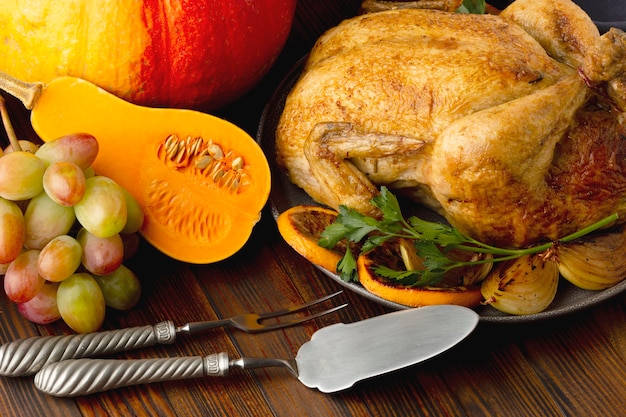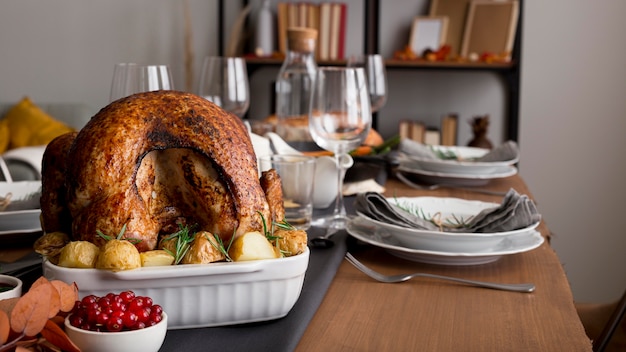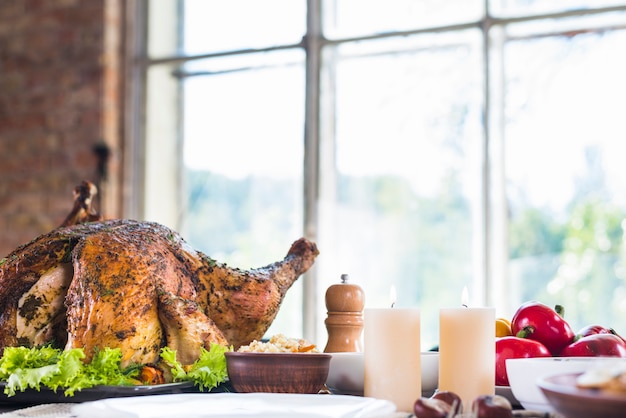Ah, turkey. The star of the festive table, a symbol of family gatherings, and a culinary challenge that sends shivers down the spines of even seasoned cooks. But fear not, my fellow food enthusiasts, for I’m here to guide you through the art of roasting a turkey to perfection.
This isn’t just a recipe, it’s a journey. We’ll explore everything from choosing the right bird to tackling those age-old questions about stuffing, brining, and yes, even how long to cook the darn thing! I’ll share my own tips and tricks, gathered from years of turkey-roasting triumphs (and a few mishaps, let’s be honest).
So, grab a comfy chair, a cuppa, and let’s dive into the delicious world of turkey roasting.
(Part 1) Choosing the Right Turkey

Before you even think about turning on the oven, you need to find your perfect turkey. This isn’t about settling for the first bird you see; it’s about choosing the right size, the right type, and the right freshness.
The Great Turkey Debate: Fresh vs. Frozen
We’ve all been there: staring at the poultry section, pondering the difference between fresh and frozen turkeys. Personally, I’m a fan of fresh. The flavour just seems more intense, almost like a taste of the farm. But frozen turkeys are equally delicious and are often more convenient, especially if you’re buying closer to your feast. It all comes down to preference and what works best for you.
Turkey Size: Getting It Right
One of the most common questions I get is “how big a turkey should I buy?” The answer is simple: aim for about 1 pound of turkey per person. A good rule of thumb is to always have a little extra, just in case you have unexpected guests or end up with some hungry leftovers lovers.
Checking Your Turkey
Now that you’ve got your chosen bird home, it’s time for a visual inspection. Check for any tears in the skin or discoloration. The turkey should be well-wrapped and chilled, with no signs of spoilage.
The Art of Defrosting: Don’t Panic!
If you’ve opted for a frozen turkey, defrosting is crucial. Never, ever try to defrost at room temperature – it's a recipe for bacterial growth and a ruined dinner. The safest way is to defrost in the fridge, which takes about 24 hours for every 5 pounds of turkey. If you're short on time, you can defrost in a cold water bath, but remember to change the water every 30 minutes to ensure it stays cold.
(Part 2) Prepping Your Turkey for Glory

Now comes the fun part: prepping your turkey. This is where you transform a raw bird into a culinary masterpiece.
Brining: A Debate Worth Having
Brining, the practice of soaking your turkey in a salt solution, has sparked many debates. I’m a firm believer in its magic. Brining helps to keep the meat moist and tender, resulting in a juicier, more flavorful turkey. However, if you're short on time or simply don't fancy the extra step, don't worry – it's not essential.
The Turkey Butcher: An Option for the Brave
If you're feeling adventurous, you can butcher your turkey yourself. This involves removing the wings, legs, and thighs, and separating the breast. It might sound daunting, but it's actually fairly simple and allows you to cook the different parts of the turkey at different temperatures.
Stuffing: A Separate Affair
Here's where things get interesting – stuffing. While stuffing inside the turkey might be a classic image, it's not the safest option. Stuffing needs to reach a safe internal temperature of 165 degrees Fahrenheit, and that can be tricky when nestled inside the turkey. To play it safe, cook your stuffing separately, in a casserole dish or in the oven.
Prepping for Perfection: The Final Touches
Pat your turkey dry with paper towels, then generously rub it all over with olive oil or butter. This helps to create a crispy, golden-brown skin and adds a touch of flavour. If you’re using herbs and spices, now is the time to rub them in.
(Part 3) Roasting Your Turkey: The Culinary Showstopper

The moment has arrived: it’s time to roast your turkey. This is where your patience and attention to detail will truly shine.
Oven Temperature: The Sweet Spot
A good rule of thumb is to roast your turkey at 325 degrees Fahrenheit. This allows for even cooking and prevents the turkey from drying out.
Turkey Timing: A Guide for Success
Now comes the million-dollar question: how long do you cook your turkey? There’s no one-size-fits-all answer, but here’s a handy table to give you a starting point:
| turkey weight (lbs) | roasting time (hours) |
|---|---|
| 8-12 | 3-4 |
| 12-16 | 4-5 |
| 16-20 | 5-6 |
| 20-24 | 6-7 |
Remember, these are just guidelines. The most accurate way to know if your turkey is done is to use a meat thermometer.
Positioning for Perfection: Breast-Side Up
Place your turkey in a roasting pan, breast-side up. For even cooking, consider using a turkey rack.
Basting: The Secret to Juiciness
Basting is essential for keeping your turkey moist. It involves spooning the pan juices over the bird every 30 minutes or so.
Resting: Patience is a Virtue
After your turkey is cooked, let it rest for at least 15 minutes before carving. This allows the juices to redistribute, creating a tender, succulent turkey.
(Part 4) Checking Doneness: A Matter of Temperature
One of the most important aspects of turkey roasting is ensuring it’s cooked through and safe to eat.
Internal Temperature: The Key to Safety
The only way to know for sure if your turkey is cooked is to check the internal temperature. Use a meat thermometer inserted into the thickest part of the thigh. The safe internal temperature is 165 degrees Fahrenheit.
Visual Clues: Signs of Doneness
While a thermometer is crucial, there are some visual clues to look for: the turkey should be golden brown on the outside, and the juices should run clear when you pierce the thickest part of the thigh.
(Part 5) Serving and Storing: Making the Most of Your Masterpiece
Your turkey is cooked, rested, and ready to be carved. Now it's time to share your culinary creation with the world!
Carving with Confidence: A Step-by-Step Guide
Start by removing the legs and thighs. Then, slice the breast into thin slices. Don’t be afraid to ask for help – carving a turkey can be a two-person job!
Feast Time: The Grand Finale
The moment has arrived: it’s time to serve your masterpiece. Arrange your turkey on a platter, surrounded by your favourite side dishes like mashed potatoes, gravy, stuffing, cranberry sauce, and vegetables.
Leftovers: A Culinary Treasure
Leftover turkey is a culinary treasure waiting to be enjoyed. It's perfect for sandwiches, salads, soups, or even a delicious turkey pot pie. Store it in the fridge for up to 4 days, or freeze it for up to 2 months.
(Part 6) Troubleshooting: When Things Don’t Go as Planned
Even the most experienced cooks have a turkey-roasting mishap or two. Don't panic if things don't go exactly as planned. Here are some common issues and how to address them.
Overcooked Turkey: A Dry Dilemma
If your turkey is overcooked, it's likely to be a bit dry. Don’t despair! You can try adding gravy or sauce to help moisten the meat.
Undercooked Turkey: A Matter of Safety
If your turkey is undercooked, you’ll need to put it back in the oven until it reaches the safe internal temperature of 165 degrees Fahrenheit.
Burnt Turkey: A Lesson Learned
A burnt turkey is a sad sight, but don’t fret too much. If it’s only slightly burnt, you can carve off the burnt parts and enjoy the rest. If it’s severely burnt, it’s best to discard it.
(Part 7) Going Beyond the Traditional: Exploring Turkey Variations
Don’t be afraid to get creative with your turkey. Here are a few variations on the classic roast:
spatchcocked turkey: A Faster, More Even Cook
Spatchcocking involves butterflying the turkey by removing the backbone. This allows the turkey to cook faster and more evenly, resulting in a crispy skin and juicy meat.
smoked turkey: A Smoky Flavor Sensation
For a deeper, smoky flavour, try smoking your turkey instead of roasting it. It takes a little longer, but the results are well worth the extra time.
deep-fried turkey: Crispy Skin Perfection
Deep-fried turkey is a popular choice for those who love a crispy skin. However, deep-frying is not without its risks, so it's important to be very careful and follow safety guidelines.
(Part 8) FAQs: Answers to Your Turkey Questions
Here are some common questions about turkey roasting that I’ve encountered over the years:
1. Can I stuff the turkey the night before?
It’s best to avoid stuffing your turkey the night before. Stuffing the turkey in advance can increase the risk of foodborne illness. It’s best to stuff it right before roasting.
2. How do I know if the turkey is done without a thermometer?
While the internal temperature is the most reliable way to check doneness, you can also look for other clues like the juices running clear when you pierce the thickest part of the thigh and the turkey being golden brown on the outside.
3. What happens if the turkey is a bit undercooked?
If your turkey is slightly undercooked, you can put it back in the oven to cook for a bit longer. However, if it’s significantly undercooked, it’s best to discard it.
4. Can I reheat leftover turkey?
Yes, you can reheat leftover turkey in the oven, microwave, or on the stovetop. Make sure to heat it through until it reaches an internal temperature of 165 degrees Fahrenheit.
5. What’s the best way to store leftover turkey?
Store leftover turkey in the fridge for up to 4 days. You can also freeze it for up to 2 months.
(Part 9) Final Thoughts: The Art of Mastering the Turkey Roast
So there you have it: your complete guide to cooking a turkey. I hope this comprehensive guide has equipped you with the knowledge and confidence to roast a delicious, safe turkey this year. Remember, the best way to master turkey roasting is through practice and experimentation. Don’t be afraid to try new techniques and flavours to create your own perfect turkey feast. Happy cooking, and happy holidays!
Everyone is watching

Corn on the Cob: The Ultimate Guide to Perfectly Cooked Ears
Healthy MealsAh, corn on the cob. Just the name evokes images of sunny days, barbecues, and that sweet, juicy flavour that ...

Scallops: The Ultimate Guide to Perfect Cooking
Healthy MealsAh, scallops. Those delicate, sweet, and utterly delicious morsels of the sea. They hold a special place in my...

Spaghetti Squash: The Ultimate Guide to Cooking and Serving
Healthy MealsRemember that time you saw spaghetti squash at the supermarket, looking all bumpy and strange, and thought, "W...

Salmon Cooking Times: Perfect Guide for Every Recipe
Healthy MealsLet me tell you, cooking salmon is an art form. It's all about getting that perfect balance: juicy and tender,...

Ham Cooking Time: How Long to Bake, Smoke, or Boil a Delicious Ham
Healthy MealsAh, ham. It's a classic, isn't it? A real crowd-pleaser, especially around holidays. And when done right, it'...
